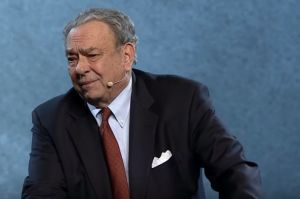What Is a Filibuster?

Filibusters have not only stymied lawmakers, stalling would-be legislation and complicating the journey of bills that appeared to be smoothly sailing through the Senate, but they have also befuddled the average citizen.
What permits legislators to stand on their feet for hours reading from cookbooks? By what authority can individual lawmakers invoke these techniques to prevent a bill from passing? Do filibusters necessarily invoke unusual behavior?
A quick skim of the Constitution reveals that filibustering cannot be located in the 18th century document. The practice, in many ways is a creative political pragmatists' invention, a technique developed from lenient Senate debate rules with the intention of preventing the chamber from bringing legislation to a vote or confirming a nominee. A key rule enabling these "talking filibusters" is the Senate's policy of unlimited debate.
As a result, there is no strict definition of a filibuster.
For Texas state senator Wendy Davis, who spoke for 13 hours in June 2013, it was talking, strictly on point and on topic, without leaning on her desk, using the bathroom or eating.
At the national level, however, germaneness is not mandated; in 1992, Sen. Alfonse D'Amato read the phone book out loud.
More commonly occurring (though less attention-getting) and less personally strenuous filibusters occur by forcing repeated votes or threatening to block a measure.
In order to terminate a filibuster at the federal level, 60 senators must all vote to end it based upon the Cloture Rule. In the current, relatively contentious political climate, unless there is a rogue senator filibustering a bill she personally despises, it is likely that the legislator knows that her political party has her back and will not be joining with the other political party and bringing the bill to a vote.
Therefore, perhaps most notably about a filibuster is that under most circumstances, legislation only requires a simple majority. But by invoking a filibuster and as a result, the Cloture Rule, the vote threshold required to pass a bill is essentially raised to three fifths.
The longest filibuster was South Carolina Sen. Strom Thurmond's 24 hour and 18 minute monologue to prevent a 1957 civil rights bill from passing. It eventually passed.
More recently, Sen. Rand Paul spoke for 12 hours and 52 minutes to prevent John Brennan from being named as the head of the CIA. Brennan ultimately won the nomination.
Of course Rand Paul's filibuster was basically a show to make news, as in more recent times the way the filibuster operates practically is that senators can filibuster without actually filibustering (talking non-stop). The reason has to do with a change in Rule 22, the cloture rule, in 1975. It was changed from two-thirds of those present to three-fifths of the entire body for cloture. This meant that 60 votes would be needed, regardless of the number of senators present, to end debate on a bill. So, it doesn't matter how long a senator holds the floor, you always need 60 votes. Simply putting a hold on a bill is considered a filibuster today, even though you don't have to keep talking on the floor.



























